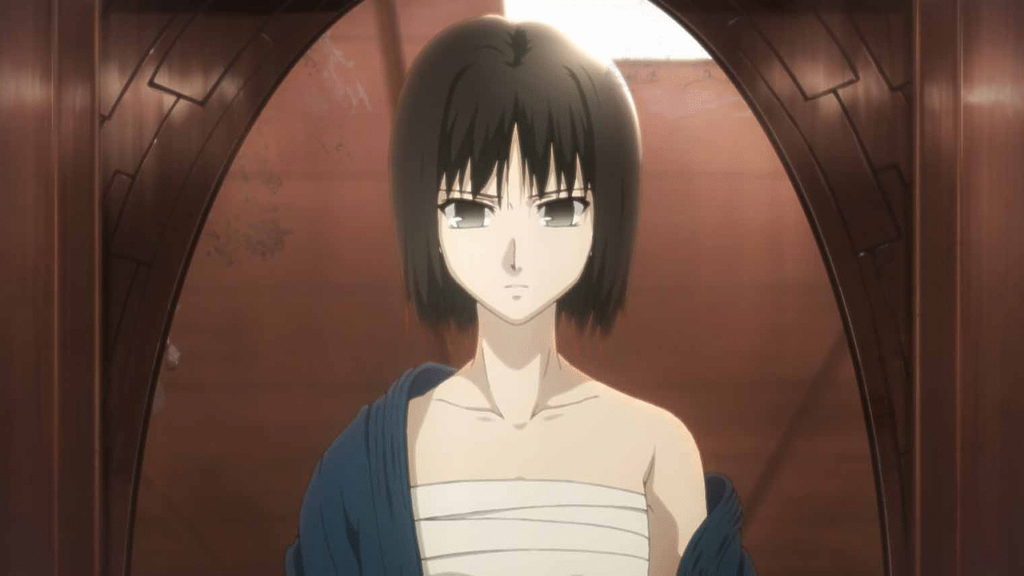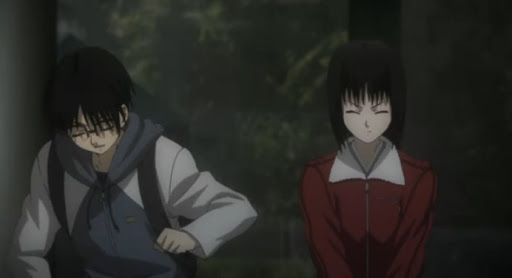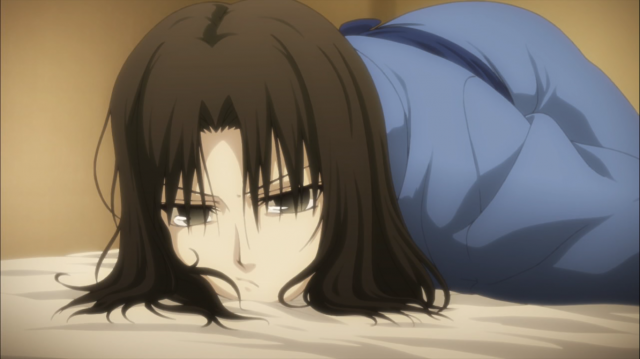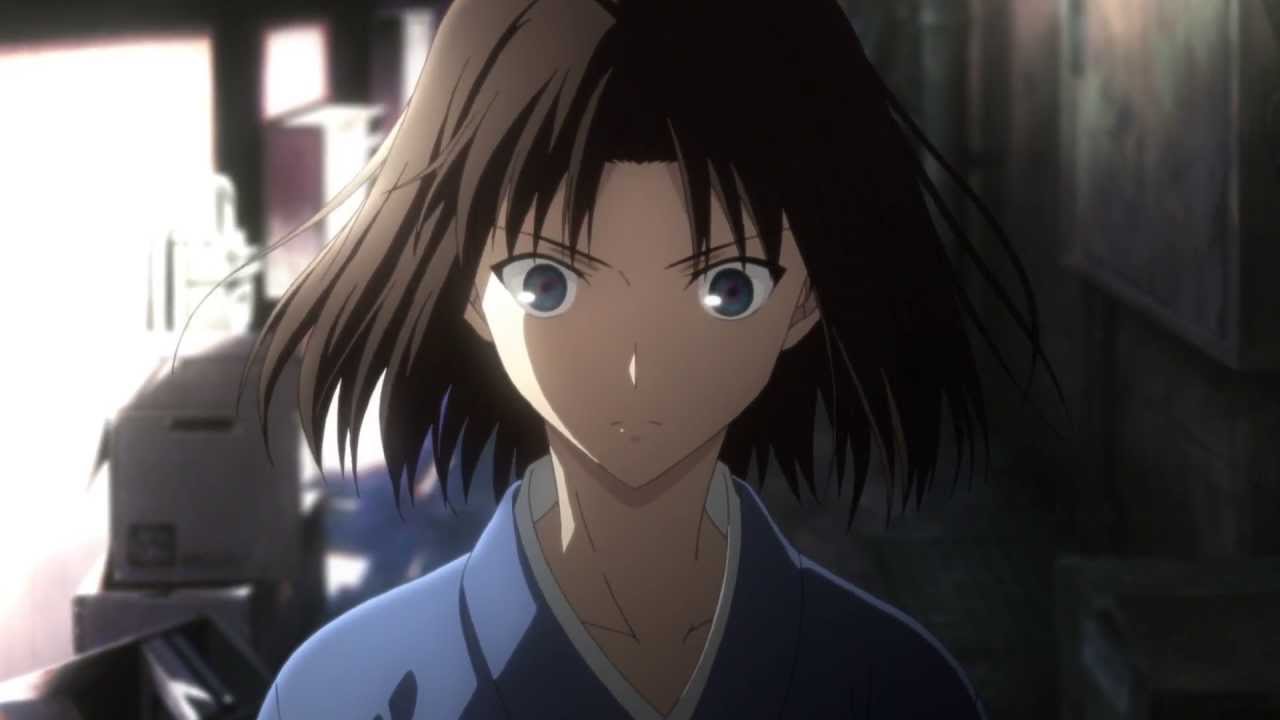As a sample of my work in otaku-related writing, I’ve decided to analyze one of my favorite titles.
Today, practically everyone in the anime and game fandom knows the legendary doujin circle TYPE-MOON, thanks to the explosive popularity of Fate and Fate/Grand Order (FGO). At the heart of TYPE-MOON is novelist Kinoko Nasu.
Back in 2001, Kara no Kyōkai (The Garden of Sinners) was released as a self-published novel, alongside Tsukihime as one of Nasu’s earliest flagship works. The structure of Kara no Kyōkai is technical and deliberately complex—it employs a shuffled timeline, unreliable narration that plays with gender identity, and dense “supernatural thriller” elements that are never fully explained.
And yet, there’s something captivating about it. Something that stuck with fans.
From 2006 to 2009, five years after its initial release, Kara no Kyōkai was adapted into a series of seven high-quality theatrical anime films. Remarkably, this wasn’t a commercial novel turned franchise—it started as a doujin work, making its cinematic adaptation highly unusual (though it has since been published by Kodansha). The films were screened in a limited number of theaters, targeting a loyal core fanbase. I myself made the pilgrimage to Shinjuku’s Teatoru Shinjuku theater every time a new chapter premiered.
The Appeal and Difficulty of Kara no Kyōkai
Despite its cult status, few fans can clearly articulate what makes Kara no Kyōkai so appealing. In fact, I’ve rarely come across a review that truly nails it.
One reason for this might be the story’s perceived difficulty. Many people seem to believe that understanding Kara no Kyōkai means understanding the correct timeline or memorizing TYPE-MOON’s shared universe lore.
Search for “Kara no Kyōkai analysis” and you’ll find dozens of articles trying to reassemble the story chronologically or break down the lore—like how Kara no Kyōkai’s Touko Aozaki is the older sister of Aoko Aozaki from Tsukihime, and how Lord El-Melloi (Waver Velvet from Fate/Zero) is affiliated with the same Mage’s Association that declared Touko a Sealing Designation and forced her into hiding.
To someone unfamiliar with the TYPE-MOON universe, all of that is confusing. Even as someone who knows a fair bit, I still find it overwhelming when I try to lay it all out.
Kinoko Nasu’s works are filled with fragmented lore, obscure terminology like “The Root” and “Mystic Eyes,” and a brooding atmosphere. These elements link Kara no Kyōkai loosely to Fate, Tsukihime, and FGO—making it tempting for fans who came in through the games or anime to view lore-hunting as the main appeal.

But I’d argue that if you view Kara no Kyōkai as a standalone work, it’s actually a very straightforward bildungsroman—a coming-of-age story.
The complexity came later, as spin-offs expanded and lore piled up. It’s worth remembering that Fate/stay night, TYPE-MOON’s breakout hit, wasn’t released until 2004—three years after Kara no Kyōkai.
So when top-tier FGO characters like Lord El-Melloi cross over with Touko Aozaki in spin-offs like Lord El-Melloi’s Case Files, those connections were retroactively added. They’re fun, but optional.
In fact, obsessing over these lore-based connections may actually obscure the core meaning of Kara no Kyōkai. The deeper into the TYPE-MOON universe you go, the harder it is to see what’s right in front of you.
A Simple Truth Hidden in Layers
Let’s set aside the lore and timelines.
At its core, Kara no Kyōkai has a strikingly simple and powerful theme—but it’s so raw and emotionally charged that it had to be buried beneath layers of supernatural dressing.
What is it?
Kara no Kyōkai Is a Story of a Girl Growing Up
Ask anyone who the protagonist is, and they’ll probably say Shiki Ryougi and Mikiya Kokutou. It seems to be a story about their trials and their bond.
But that’s not quite right.
Kokutou is best understood as the catalyst for Shiki’s transformation—the boy who changes her. But the story’s agency lies entirely with Shiki. She is the one who evolves. This is her story.
In the beginning, Shiki’s body houses two personalities: the feminine Shiki and the masculine SHIKI. This duality reflects a child’s prepubescent fluidity—a girl who behaves energetically, like a boy.

Then something changes.
The feminine Shiki begins to feel attracted to Kokutou—a boy. But that attraction is terrifying. It threatens her identity. The result? The male SHIKI disappears.
This is depicted as a car accident followed by a coma, during which SHIKI vanishes.

SHIKI—the male persona driven by destruction—tries to kill Kokutou and ultimately sacrifices himself. It’s chaotic and emotionally violent, a metaphor for hormonal upheaval. The red kimono Shiki wears is an obvious metaphor for menstruation.
It’s a vivid and almost painful portrayal of puberty, emotional confusion, fear of change, and the helpless sweetness of first love.
That a male writer like Nasu could so convincingly depict such a visceral, feminine inner life is nothing short of genius. His works often feature complex, raw female characters.
Later, with the guidance of adult woman Touko Aozaki, Shiki accepts her femininity, matures, and comes to terms with who she is. Eventually, she chooses to be with Kokutou.
Thus ends Kara no Kyōkai—a coming-of-age story about a girl becoming a woman.
All the Lore Is Just Elegant Disguise
Fighting a Buddhist monk with embedded relics? Slicing ghosts with Mystic Eyes? Bending the Bay Bridge with magic?
Those are all branches—not the trunk.
They are disguises—brilliant, enthralling disguises—covering a story that is deeply intimate and embarrassingly human.
And yet that’s why it resonates so powerfully.
Shiki’s Hidden Charm
You might say, “I don’t know why, but I love Shiki. Kara no Kyōkai is amazing. The animation is stunning. The music is haunting. The action scenes are so cool.”
That’s all true. But behind all of that lies something very human and universal.
Shiki’s tsundere scenes are legendary.

There are moments where she roundaboutedly expresses affection—so sweet they’ll give you a toothache. Personally, I love the scene where she argues with Kokutou over strawberry Häagen-Dazs, or the one where he gets her to take care of a stray cat.
When I later found out the voice actors for Shiki and Kokutou got married in real life, I felt a strange sense of closure. You should absolutely watch their scenes together:
In Conclusion
This wasn’t a data-based otaku wiki post—it was a literary reading of Kara no Kyōkai.
And maybe some readers will think, “Oh! That actually makes a lot of sense.”
In an era of rapid content consumption, it’s rare for a cult anime to be cherished for over 20 years. Even now, Fate/Grand Order—a multibillion-yen mobile game—still brings back collaboration events with Kara no Kyōkai.
That kind of loyalty isn’t possible without a core that resists easy consumption.
In Kara no Kyōkai, that core remains largely unspoken. And that’s exactly why it keeps drawing people in.
Let me end with a line from the drama CD A Day at Ahnenerbe, where all the TYPE-MOON characters appear.
“I never thought of Kara no Kyōkai as a supernatural thriller. It’s a poem. A poem you’re only allowed to write during a certain phase of your life. A raw, bleeding text.”
– Shiki Ryougi



コメント